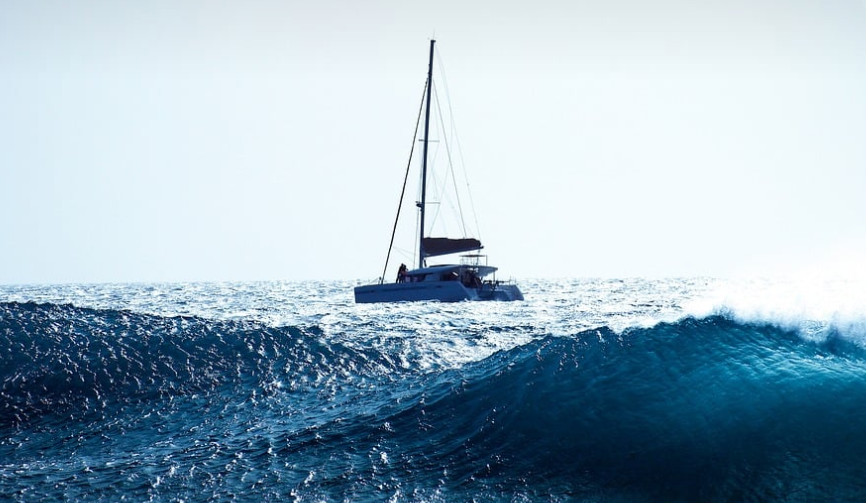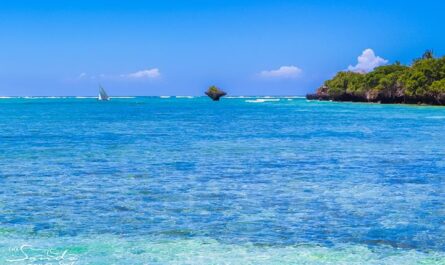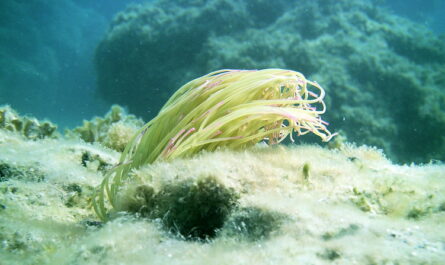Deep-sea canyons are among the most fascinating yet least understood features of our planet’s underwater landscapes. Carved by powerful geological forces and sculpted by the persistent flow of ocean currents, these immense valleys plunge deep into the Atlantic Ocean floor, creating unique habitats that harbor extraordinary biodiversity. In recent years, scientists have begun to unravel the complex roles these canyons play in shaping marine ecosystems, influencing nutrient cycles, and serving as biodiversity hotspots. This comprehensive exploration delves into the formation, ecological significance, and future prospects of deep-sea canyons in the Atlantic, revealing how these underwater marvels are integral to the health of our oceans.
1. The Formation of Deep-Sea Canyons
A. Geological Processes at Work
Deep-sea canyons are formed through a combination of tectonic activity and erosional forces. Located along the continental margins, these canyons often serve as conduits between the shallow continental shelf and the deep ocean basin. Their formation is driven primarily by:
- Tectonic Activity: The movement of tectonic plates creates faults and fractures in the Earth’s crust. In the Atlantic, the interaction between the North American, Eurasian, and African plates has played a significant role in shaping the seafloor. These tectonic forces lift and subduct parts of the crust, forming dramatic depressions and steep-walled valleys.
- Erosion and Sediment Transport: Over millions of years, powerful turbidity currents—underwater flows laden with sediment—erode the seafloor, carving deep channels and canyons into the continental slope. These sediment flows are triggered by earthquakes, storms, or the gradual build-up of sediments on the shelf, which eventually become unstable and slide downwards.
- Glacial and Post-Glacial Processes: During the ice ages, glacial activity and subsequent melting periods also contributed to the development of deep-sea canyons by altering sea levels and sediment deposition patterns. The changing water levels influenced the intensity and reach of erosional forces, further sculpting these dramatic landscapes.
B. Key Deep-Sea Canyons in the Atlantic
The Atlantic Ocean hosts a number of prominent deep-sea canyons, each with its unique characteristics:
- The Nazaré Canyon: Located off the coast of Portugal, the Nazaré Canyon is famous not only for its role in marine ecology but also for producing some of the world’s largest waves—a testament to the canyon’s profound influence on local ocean dynamics.
- The Blake Plateau Canyons: Off the southeastern coast of the United States, these canyons are vital for understanding sediment transport and biological productivity on the continental margin.
- The Canary Canyons: Along the northwest African coast, these canyons contribute to the rich biodiversity of the region and play a significant role in nutrient cycling in the subtropical Atlantic.
These geological features, though different in size and structure, share common ecological roles that are crucial to marine life.
2. Ecological Significance of Deep-Sea Canyons
A. Biodiversity Hotspots
Deep-sea canyons are biodiversity hotspots that support a wide array of marine species. Their complex topography and dynamic environments provide numerous niches where life can thrive:
- Habitat Complexity: The steep walls, varied substrates, and fluctuating depths create a mosaic of habitats, from sediment-covered floors to rocky outcrops. This diversity in habitats supports a range of organisms—from benthic invertebrates to demersal fish and deep-sea corals.
- Nutrient-Rich Environments: Turbidity currents transport organic material and nutrients from the continental shelf into the canyons. This influx of nutrients fuels high levels of primary productivity, which supports diverse food webs. Plankton blooms near canyon walls can attract larger predators, contributing to the overall complexity of the ecosystem.
- Refugia for Endangered Species: As shallow-water ecosystems face threats from climate change and human activity, deep-sea canyons may serve as refugia for species that cannot adapt to rapidly changing conditions. These refuges can help preserve genetic diversity and maintain the resilience of marine populations.
B. Crucial Role in Nutrient Cycling
Deep-sea canyons function as natural conduits that transport nutrients from the continental shelf to the deep ocean. This process is vital for maintaining the health of the marine ecosystem:
- Sediment and Organic Matter Transport: Turbidity currents deposit sediments rich in organic material, which in turn supports microbial communities that break down these substances, releasing essential nutrients back into the ecosystem.
- Carbon Sequestration: The sediments deposited in deep-sea canyons can lock away carbon for millions of years, playing an important role in regulating atmospheric CO₂ levels. By sequestering carbon, these canyons help mitigate the impacts of climate change.
- Biogeochemical Cycles: The nutrient exchange that occurs in deep-sea canyons supports the broader biogeochemical cycles of the ocean, influencing the distribution of elements like nitrogen, phosphorus, and sulfur, which are essential for marine life.
C. Unique Adaptations and Symbiotic Relationships
Life in deep-sea canyons is often characterized by unique adaptations that allow organisms to thrive in extreme conditions:
- Chemosynthetic Communities: Some deep-sea canyons host chemosynthetic communities similar to those found around hydrothermal vents. In these communities, bacteria use chemicals such as hydrogen sulfide to produce energy, supporting a range of organisms in the absence of sunlight.
- Adaptations to Low Light and High Pressure: Organisms in these environments have evolved specialized adaptations, such as enhanced sensory organs, bioluminescence, and robust body structures, to survive in the dark, high-pressure conditions of the deep ocean.
- Symbiotic Relationships: Many species form symbiotic relationships to improve survival. For example, deep-sea corals may host symbiotic algae or bacteria that help them obtain energy, while certain fish species have adapted to live in close association with larger organisms for protection and access to food.
3. Technological Innovations in Studying Deep-Sea Canyons
A. Remotely Operated Vehicles (ROVs) and Autonomous Underwater Vehicles (AUVs)
The exploration of deep-sea canyons has been revolutionized by advances in underwater technology. ROVs and AUVs allow researchers to access and study these remote environments with unprecedented detail:
- High-Definition Imaging: Modern ROVs capture high-definition video and photographs, providing detailed visuals of the canyon landscapes, species interactions, and unique geological formations.
- Sample Collection: These vehicles can collect sediment, water, and biological samples without disturbing the delicate ecosystems. This sampling is crucial for understanding the chemical and biological processes at play.
- Real-Time Data: AUVs are capable of mapping the seafloor and collecting real-time data on temperature, pressure, and chemical composition. This information helps scientists build comprehensive models of the canyon environment.
B. Advanced Sensor Technologies
Cutting-edge sensors and monitoring equipment are integral to studying the dynamic processes within deep-sea canyons:
- Chemical Sensors: Instruments that measure pH, dissolved oxygen, and nutrient levels provide insights into the biogeochemical cycles occurring in these ecosystems.
- Acoustic Sensors: Hydrophones and sonar systems help detect the sounds of deep-sea life, such as the calls of fish or the movement of sediment flows, offering a non-invasive way to monitor activity in the canyons.
- Environmental DNA (eDNA) Sampling: eDNA technology enables researchers to detect and identify species based on genetic material present in the water. This method is especially valuable in deep-sea environments where traditional sampling methods are challenging.
C. Data Analytics and Machine Learning
The vast amounts of data collected from deep-sea explorations require sophisticated analytical tools. Machine learning and data analytics are increasingly used to interpret complex datasets:
- Pattern Recognition: Algorithms can identify patterns in species distribution, environmental changes, and nutrient cycles, providing insights into the functioning of deep-sea canyons.
- Predictive Modeling: By analyzing historical data, researchers can develop models to predict future changes in canyon ecosystems. This predictive power is essential for conservation and management efforts.
- Integration of Multidisciplinary Data: Advanced data analytics allow scientists to combine geological, chemical, and biological data, creating a holistic understanding of deep-sea canyons and their impact on marine biodiversity.
4. Conservation and Management of Deep-Sea Canyons
A. Threats to Deep-Sea Ecosystems
Despite their resilience, deep-sea canyons are not immune to human impact. Several threats challenge the sustainability of these vital ecosystems:
- Deep-Sea Mining: The extraction of minerals from the ocean floor poses a significant risk to the delicate balance of deep-sea environments. Mining activities can disrupt sediment layers, damage habitats, and release pollutants.
- Climate Change: Rising ocean temperatures and acidification are altering the conditions in deep-sea canyons, affecting the health of coral communities and other marine life.
- Pollution: Plastic debris, chemical runoff, and other forms of pollution can reach even the deepest parts of the ocean, threatening the organisms that reside there.
B. Strategies for Conservation
To protect deep-sea canyons and the biodiversity they support, conservation strategies must be multifaceted and collaborative:
- Marine Protected Areas (MPAs): Designating MPAs around vulnerable deep-sea canyons can help limit human activities and protect these ecosystems from industrial exploitation.
- Sustainable Practices: Promoting sustainable fishing and mining practices is essential to minimize environmental damage. Regulations and industry standards can help ensure that resource extraction does not compromise the health of deep-sea environments.
- International Collaboration: The global nature of the ocean means that conservation efforts require cooperation among nations. International treaties and collaborative research initiatives can help establish and enforce standards that protect deep-sea ecosystems.
- Public Awareness: Educating the public about the importance of deep-sea canyons and the threats they face is crucial for building support for conservation efforts. Documentaries, interactive exhibits, and citizen science projects can engage communities and inspire action.
5. The Broader Impact on Marine Life and Biodiversity
A. Enhancing Biodiversity
Deep-sea canyons play a critical role in enhancing marine biodiversity. Their complex structures provide shelter, breeding grounds, and feeding areas for countless species:
- Species Richness: The varied topography of canyons supports a wide array of marine organisms, from deep-sea corals and sponges to fish, crustaceans, and mollusks. This diversity contributes to the overall health of the marine ecosystem.
- Ecosystem Connectivity: Deep-sea canyons act as corridors that connect different parts of the ocean, allowing species to migrate and interact. This connectivity is vital for genetic diversity and the resilience of marine populations.
- Refugia for Endangered Species: As shallow-water ecosystems face increasing pressures from climate change and human activities, deep-sea canyons may serve as refugia—safe havens where vulnerable species can survive and thrive.
B. Influencing Nutrient Cycling and Carbon Sequestration
The ecological functions of deep-sea canyons extend beyond providing habitats; they also play a crucial role in nutrient cycling and carbon sequestration:
- Nutrient Redistribution: Turbidity currents that flow through canyons transport organic matter and nutrients from the continental shelf to the deep ocean. This redistribution supports the productivity of both deep-sea and coastal ecosystems.
- Carbon Storage: The sediments deposited in deep-sea canyons often contain organic carbon that is sequestered for long periods. This natural process contributes to the regulation of atmospheric carbon dioxide levels, playing a part in global climate regulation.
- Ecosystem Resilience: By facilitating nutrient cycling, deep-sea canyons help maintain the resilience of marine ecosystems, enabling them to recover from disturbances more rapidly.
6. Future Directions in Deep-Sea Research
A. Advancing Scientific Understanding
Ongoing research is essential to unravel the complexities of deep-sea canyons and their role in the marine ecosystem. Future studies are expected to focus on:
- Long-Term Monitoring: Establishing permanent monitoring stations in deep-sea canyons will help track changes in environmental conditions, species composition, and ecosystem health over time.
- Interdisciplinary Approaches: Combining insights from geology, biology, chemistry, and oceanography will create a more integrated understanding of these ecosystems. Such interdisciplinary research is key to developing effective conservation strategies.
- Climate Change Impacts: Investigating how climate change affects deep-sea canyons—especially in terms of temperature, acidification, and nutrient availability—will be crucial for predicting future ecological shifts.
B. Technological Innovations
The future of deep-sea exploration is closely tied to technological advancements:
- Enhanced Robotic Exploration: Next-generation ROVs and AUVs will provide even deeper and more detailed explorations of underwater canyons, revealing new species and ecological processes.
- Real-Time Data Collection: Improved sensor technology and communication systems will allow for real-time monitoring of deep-sea conditions, enabling more responsive and adaptive management of these ecosystems.
- Data Integration and Modeling: Advanced computational models will integrate vast datasets to predict how deep-sea ecosystems respond to natural and human-induced changes. This predictive power will be vital for proactive conservation efforts.
C. Policy and Conservation Initiatives
Effective protection of deep-sea canyons requires robust policy frameworks and international cooperation:
- Global Regulatory Standards: The establishment of international standards for deep-sea mining, fishing, and pollution control will help safeguard these ecosystems.
- Funding for Research: Increased investment in deep-sea research will not only advance our scientific understanding but also inform policy decisions and conservation practices.
- Community and Stakeholder Engagement: Involving local communities, industry stakeholders, and environmental organizations in conservation efforts will foster a collaborative approach to protecting deep-sea biodiversity.
7. The Significance for Global Marine Ecosystems
A. Deep-Sea Canyons as Ecological Linchpins
Deep-sea canyons are not isolated features; they are integral to the broader health and functioning of global marine ecosystems. Their role in nutrient cycling, habitat provision, and biodiversity support makes them key players in maintaining the balance of life in the ocean.
- Ecological Connectivity: These canyons connect different marine habitats, allowing for the movement of species and the flow of nutrients. This connectivity is essential for the stability and resilience of marine communities.
- Biodiversity Reservoirs: The unique conditions in deep-sea canyons support species that may not thrive in other environments. Protecting these areas ensures the preservation of genetic diversity, which is crucial for the adaptability of marine life in a changing climate.
B. Contributions to Climate Regulation
Deep-sea canyons contribute to global climate regulation through their role in carbon sequestration and nutrient cycling. The organic carbon stored in the sediments of these canyons represents a natural buffer against rising atmospheric CO₂ levels. By understanding and protecting these processes, we can better appreciate the interconnectedness of marine ecosystems and the role they play in mitigating climate change.
8. Real-Life Examples and Success Stories
A. Case Studies from the Atlantic
Several deep-sea canyons in the Atlantic have been the subject of pioneering research projects that highlight their ecological importance:
- Nazaré Canyon (Portugal): Known for its dramatic impact on local ocean currents and wave formation, Nazaré Canyon has been extensively studied for its role in nutrient distribution. Research here has revealed that the canyon supports a rich assemblage of marine species, from microscopic plankton to large pelagic fish.
- Blake Plateau Canyons (United States): Off the southeastern coast of the U.S., the Blake Plateau canyons serve as critical corridors for migratory species. Studies in these regions have demonstrated how deep canyons facilitate the flow of organic matter and help maintain the productivity of adjacent coastal ecosystems.
B. Global Impact and Collaborative Projects
International collaborations have furthered our understanding of deep-sea canyons. For instance, joint research initiatives between European and North American institutions have led to groundbreaking discoveries about the biodiversity and ecological functions of these underwater landscapes. These projects not only advance scientific knowledge but also inform conservation strategies on a global scale.
9. Challenges and the Road Ahead
A. Addressing Human Impact
One of the greatest challenges facing deep-sea canyons is the potential impact of human activities such as deep-sea mining, pollution, and overfishing. To protect these ecosystems:
- Strict Regulation: Implementing and enforcing stringent regulations on industrial activities in the deep sea is crucial.
- Sustainable Practices: Encouraging sustainable fishing and mining practices can help reduce the negative impact on these delicate environments.
- Public Awareness: Raising awareness about the importance of deep-sea ecosystems is key to garnering support for conservation initiatives.
B. Enhancing Scientific Collaboration
The complexity of deep-sea ecosystems demands a collaborative approach to research and conservation:
- Interdisciplinary Research: Combining expertise from various fields—geology, biology, chemistry, and oceanography—will yield more comprehensive insights into deep-sea canyons.
- Global Partnerships: International cooperation is essential for developing standardized methodologies, sharing data, and implementing effective conservation strategies.
- Innovative Technologies: Continued investment in technology will enhance our ability to explore and monitor deep-sea environments, providing the data needed to drive informed decision-making.
C. The Future of Deep-Sea Ecosystem Management
The future of deep-sea canyons lies in proactive, adaptive management strategies that balance human use with ecological preservation. This includes:
- Monitoring and Assessment: Continuous monitoring of environmental conditions will help track the health of deep-sea ecosystems and guide timely interventions.
- Adaptive Management: Flexibility in management practices allows for rapid response to emerging threats, ensuring that conservation efforts remain effective in the face of changing environmental conditions.
- Integration with Global Climate Strategies: Recognizing the role of deep-sea canyons in carbon sequestration and nutrient cycling, their conservation should be integrated into broader climate change mitigation efforts.
10. Conclusion: Embracing the Hidden Wonders of the Deep
Deep-sea canyons in the Atlantic are more than just geological features—they are vibrant, dynamic ecosystems that play a critical role in shaping marine biodiversity and global environmental health. Their complex interplay of geology, biology, and chemistry creates unique habitats that support a wealth of life, from microscopic plankton to large migratory species. By influencing nutrient cycling, facilitating biodiversity, and contributing to climate regulation, these underwater canyons are indispensable to the health of our oceans.
As we continue to explore and understand these hidden wonders through advanced technologies and international collaboration, we gain not only scientific insights but also a deeper appreciation for the delicate balance of life beneath the waves. The preservation of deep-sea canyons is a vital part of global conservation efforts, ensuring that the extraordinary biodiversity of our oceans is maintained for future generations.
In a world facing unprecedented environmental challenges, the study and protection of deep-sea canyons serve as a beacon of hope—a reminder that even in the most remote parts of the ocean, nature’s resilience and ingenuity continue to inspire and sustain life. The ongoing research, technological innovation, and collaborative conservation efforts signal a promising future for these ecosystems, one where human progress and environmental stewardship go hand in hand.
For researchers, conservationists, and nature enthusiasts alike, the deep-sea canyons of the Atlantic offer a frontier of discovery that is as awe-inspiring as it is essential. By embracing the hidden wonders of the deep, we take a crucial step toward understanding the intricate web of life that sustains our planet—and in doing so, we contribute to a legacy of environmental responsibility and scientific innovation that will benefit generations to come.
So, dive into the mysteries of the deep, explore the intricate beauty of these underwater landscapes, and join the global effort to protect and preserve the incredible biodiversity of the Atlantic’s deep-sea canyons. The future of our oceans depends on it, and the journey of discovery is just beginning.



